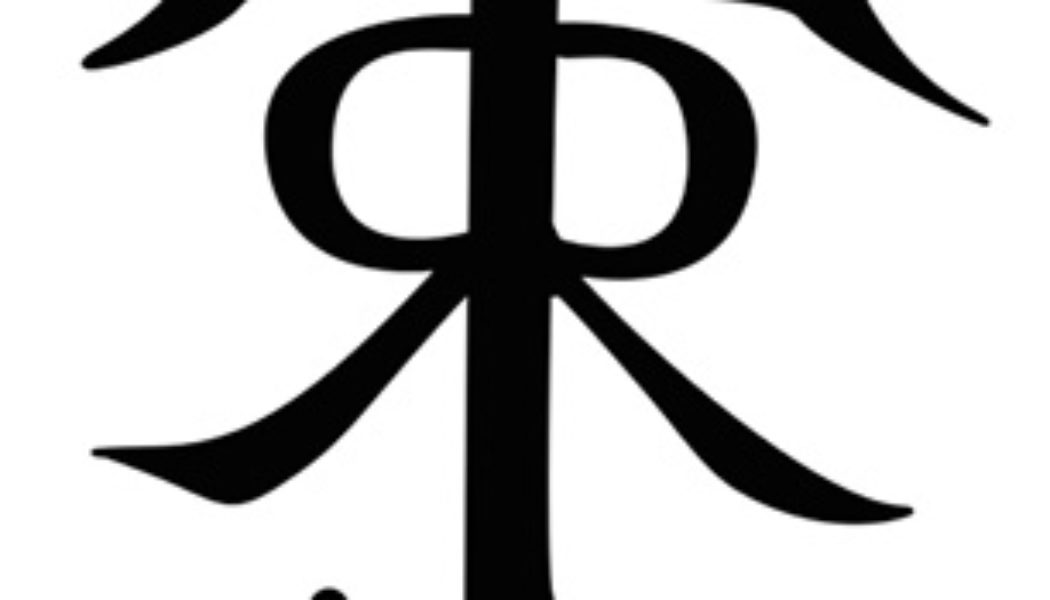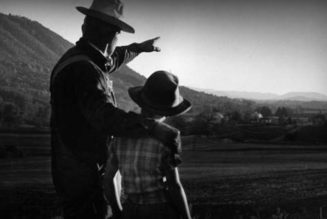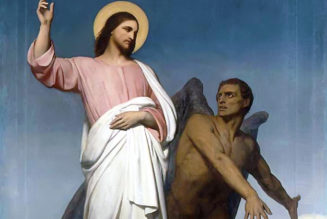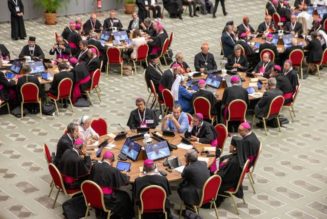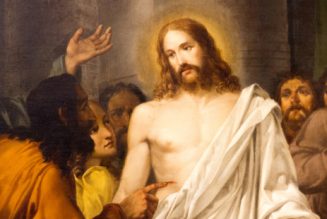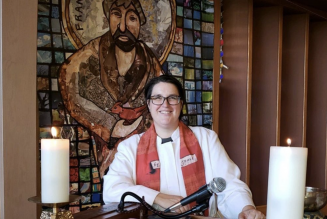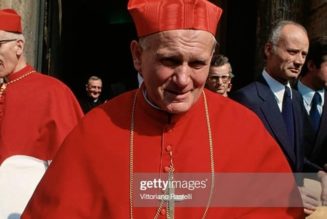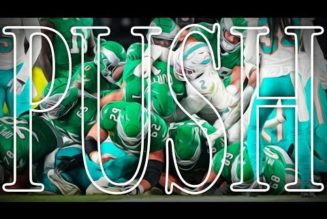Professor Holly Ordway’s new book, Tolkien’s Faith, published last month, is not just an intriguing peek at the Catholic faith of the beloved author of The Lord of the Rings — it is truly a deep dive. Here are just a few of the delightful treasures Ordway discovered and brought to the surface, in descending order:
7. John Ronald Reuel Tolkien was not a cradle Catholic. He was born in Bloemfontein, South Africa (then a member country of the British Commonwealth) and baptized as an infant in the Anglican Church, at the Cathedral of St. Andrew and St. Michael. When he was 4 years old, his father died in South Africa. Mabel, Tolkien’s mother, permanently relocated the family to England. When Tolkien was 8, Mabel converted to Catholicism, and she raised both her sons (J.R.R. and his younger brother, Hilary) as Catholics. After her conversion, Mabel suffered condemnation and loss of all support from her family. They cut off all financial assistance to her, even though she was a widow with very little means and suffered from poor health besides. Yet she managed to instill in young Tolkien a love for God and the Church that stayed with him his entire life.
6. The legacy of St. John Henry Newman figured strongly in Tolkien’s life. Mabel received her instruction in the faith at St. Anne’s, a parish near Birmingham founded by Newman. After her conversion to Catholicism, she and her sons attended Mass and received their Catholic formation at the Birmingham Oratory. The Birmingham Oratory, modeled after St. Philip Neri’s Oratory in Rome, was the first such one in England and had also been founded by Newman in 1852. And Tolkien’s legendary academic career was at Oxford University, Newman’s own academic stomping grounds. It is worth noting that, like Tolkien’s mother and most other converts to Catholicism in Victorian England, Newman suffered ostracism from his former colleagues, associates and even his family — the future Catholic cardinal’s sister Harriet never spoke to him again. During his Oxford days, Tolkien was active in the Newman Society and even served as its vice president. And, finally, Tolkien’s third son, Christopher, had a very personal connection to Newman: His godmother was Newman’s great-niece.
5. J.R.R. and Hilary were orphaned when their mother succumbed to her diabetes-related illness and died in 1904. Before her death, she had appointed one of the Oratorian priests, Father Francis Morgan, by then a dear friend of the family, to be the boys’ guardian in the event of her passing. Under the care and tutelage of Father Morgan and the other Oratorians, the Tolkien boys received an exemplary upbringing. Father Morgan had been a student of John Henry Newman and even served as the cardinal’s secretary for a time. Tolkien referred to Father Morgan as “his second father” and described the Birmingham Oratory as “a good Catholic home, in excelsis.”
4. Understanding the life and teachings of St. Philip Neri is essential to understanding Tolkien’s faith, namely St. Philip’s humor, his insistence on cultivating the virtue of humility, and his devotion to music, the arts and the intellectual life. St. Philip founded the original Congregation of the Oratory, in Rome, in the 1500s. It proved so influential and successful that numerous oratories sprung up all over the world, including the Birmingham Oratory. Tolkien took Philip as his confirmation name, after Philip Neri. If you look carefully at Tolkien’s monogram, which he designed himself, you’ll see all five of his initials. The J, R, R (one of them is backward), and T are easy to see. The P for Philip is not so obvious, but it is cleverly incorporated into the forward-facing R, with a small spur to the right at its foot.

3. If you want to read a really good rendition of the Old Testament Book of Jonah, you can read Tolkien’s translation of it in the original 1966 Jerusalem Bible. Alexander Jones, the director of the project to translate La Bible de Jérusalem from French to English, approached Tolkien in 1957, and Tolkien agreed. He worked mostly from the French text, but learned a little Hebrew as needed.
[In the photo gallery of the book, there’s a photo of the page in the JB listing all the contributing translators and editors, including Tolkien’s. I remember on a retreat once, picking up the Jerusalem Bible to read, and being pleasantly gobsmacked to discover that Tolkien had a hand in a well-regarded English translation of the Sacred Scriptures.]
2. Tolkien is a household name, one of the most famous Catholic monikers in the world. But even Tolkien suffered a dry spell in his Catholic faith, a period of about 10 years, from 1920 to 1930, during which he admits that “out of wickedness and sloth I almost ceased to practice my religion …” These were difficult years, in which he started at the bottom rung of academia and worked hard to advance his career, navigated with varying degrees of success the tension in his marriage over his wife’s conversion to Catholicism, and bore increasing responsibilities as his home gradually filled up with small children. Yet he emerged from his “dark night” with a strong, vibrant faith and unshakable love for God, the saints, the Church and the Holy Eucharist. As Ordway writes in her book, “A full treatment of [Tolkien’s] faith uncovers a life marked by determination and decision.” Christians of all traditions would do well to admire and emulate him.
1. Tolkien’s third name, Reuel, is curious and unusual. Evidently, it has been meaningful to Tolkien and his entire family: It was his father’s middle name; his parents gave the name to both their sons; and Tolkien, in turn, gave it to all four of his children, including his daughter, Priscilla. His progeny have continued the tradition: Tolkien’s grandchildren and great-grandchildren all have “Reuel” as one of their middle names. But what does it mean? The name “Reuel” is from the Old Testament. It is Hebrew for “friend of God.”
What a joy and a blessing it would be for all people of faith to be given this name by God himself!
Bonus: Tolkien’s Favorite Saints
As Catholics, we of course want to know: Other than St. Philip Neri, were there any saints to whom Tolkien had a special devotion? Indeed, there were:
St. John the Evangelist, who is traditionally depicted as an eagle and who may, therefore, have been in Tolkien’s mind as he crafted the role of eagles in Middle-earth.
St. Bernadette, whose closeness to the Blessed Virgin Mary was particularly resonant with Tolkien because of his deep appreciation for the Immaculate Conception. Tolkien declared, “I attribute whatever there is of beauty and goodness in my work to the influence of the Holy Mother of God.”
St. Thomas More, one of the patron saints of the Newman Society at Oxford, no doubt resonated with Tolkien because of the anti-Catholicism still very much alive in England in his day.
He also must have been quite taken with St. Brendan, who sailed west into lands and seas unknown and whose journey is perhaps echoed in Tolkien’s entire Middle-earth legendarium, or at least the part about sailing west. Tolkien wrote a poem about St. Brendan called Imram (Irish for “voyage”). It was originally published in 1955 in the British weekly magazine Time & Tide. The poem is reprinted in Sauron Defeated (1992), Vol. 9 of Christopher Tolkien’s epic 12-volume series The History of Middle-earth.
Learn More
For more in-depth research into the life and faith of J. R. R. Tolkien, I highly recommend Holly Ordway’s book, published by Word on Fire. Ordway and Brandon Vogt spoke about her book on the Word on Fire podcast, Episode 402, available here.
You can also view Ordway’s recent talks on the subject at The Marion E. Wade Center, a world-famous repository of archival material by and about Tolkien and C.S. Lewis, located on the campus of Wheaton College, in Wheaton, Illinois. Links to video recordings of the talks are available on the Wade Center’s webpage.
The first talk is entitled “A Hard-Won Faith: Tolkien’s Spiritual Journey” and was delivered on Sept. 25, 2023. The second talk, “Tolkien’s Faith and the Formation of Middle-earth” was delivered Sept. 26, 2023.
